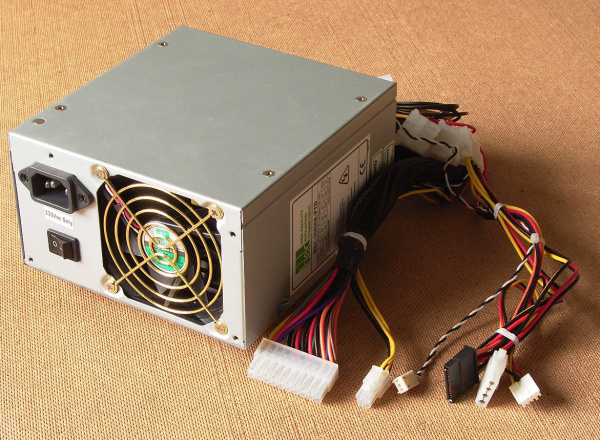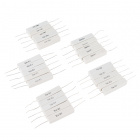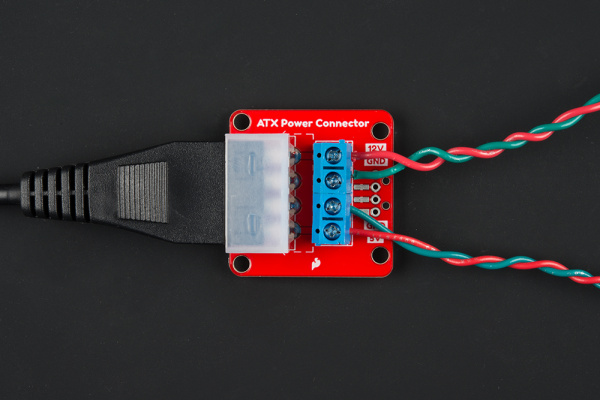ATX Power Connector (4-Pin) Breakout Hookup Guide
Power Supply Options
Below are options where you will encounter the 4-pin connector.
ATX Power Supply
ATX power supplies usually have a number of power connectors available to power components for a desktop computer. The connector of interest in the image below is the second connector from the right. This 4-pin power connector is intended to power 12V and 5V computer peripherals (such as disk drives). Depending on the manufacturer of the power supply, the quantity of each connector can vary. If you want to grab some juice for your project from this type of power supply, you'll need to connect the breakout board to this port.
- Make: Projects - Computer Power Supply to Bench Power Supply Adapter
- Instructables: Convert a Computer Power Supply to a Variable Bench Top Lab Power Supply
In most cases, a minimum of about 10Ω 10Watt power resistor is needed. Otherwise, just use Ohm's Law and calculate the amount of power that the power resistor will absorbing to ensure that it can handle the current. Depending on your power supply, the power resistor can become hot so make sure to use a heat sink and enough air flow to dissipate the heat. You can also add a few of power resistors in parallel.
12V/5V (2A) Power Supply
Certain wall adapters also take advantage of this standard 4-pin port like the 12V/5V (2A) power supply in the catalog. If your project requires either/both 12V and 5V for power you can also connect the breakout board to this power supply.
A minimum of about 10Ω 10Watt power resistor is needed if you are seeing this instability. In most cases, a minimum of about 10Ω 10Watt power resistor is needed. Otherwise, just use Ohm's Law and calculate the amount of power that the resistor will absorbing to ensure that it can handle the current. Depending on your power supply, the power resistor can become hot so make sure to use a heat sink and enough air flow to dissipate the heat. You can also add a few of power resistors in parallel.


